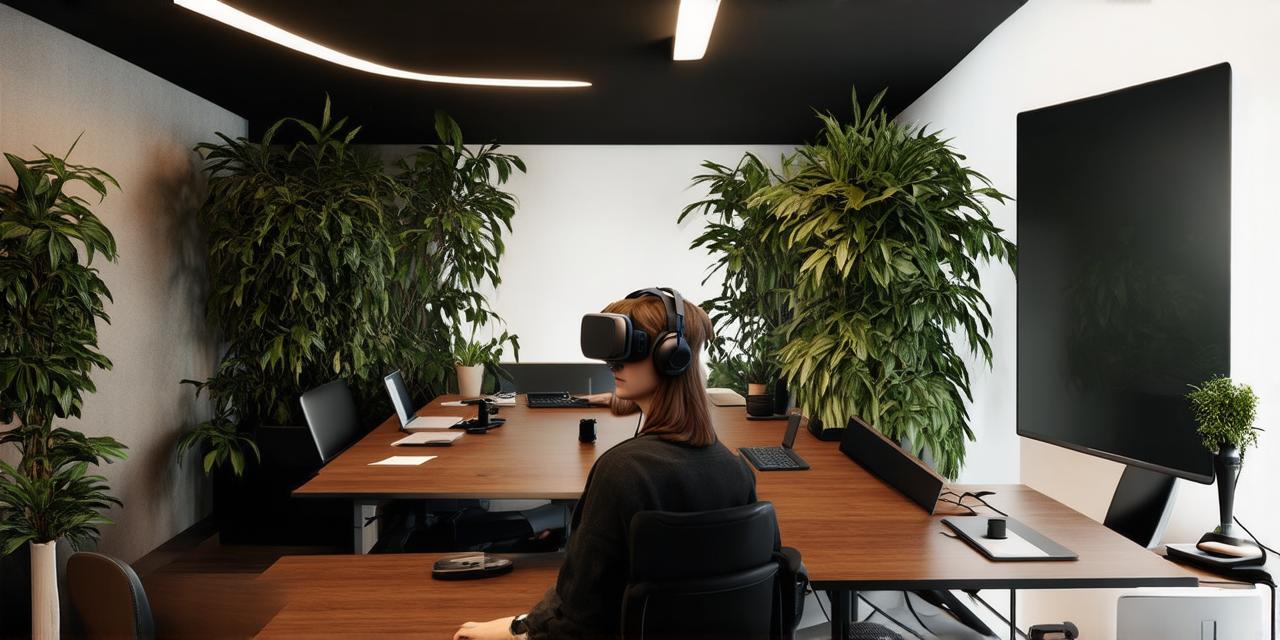Introduction
Virtual reality (VR) technology has come a long way since its inception. Today, VR is being used in various industries to enhance work efficiency, improve communication, and promote inclusivity in the workplace. In this article, we will explore how VR can contribute to creating a more inclusive work environment. We will also discuss how VR technology has been successfully implemented in various organizations, highlighting their experiences and benefits.
Virtual Reality and Inclusivity: The Connection
Virtual reality can contribute significantly to creating a more inclusive work environment in several ways. Firstly, VR enables individuals who have physical disabilities to access and participate in work activities that may have been previously impossible. For example, VR technology can be used to create virtual simulations of workplaces, allowing disabled employees to experience the workplace environment without physically being there. This can help them understand their role better and feel more included in the team.
Secondly, VR can also enhance communication and collaboration among remote workers or those who are geographically dispersed. With VR technology, employees can virtually be present in the same room, allowing for more efficient communication and collaboration. This is particularly important in today’s remote work environment, where teams often consist of individuals working from different parts of the world.
Thirdly, VR can provide an immersive training experience that is engaging and effective. It allows employees to practice new skills and perform complex tasks in a safe and controlled environment. This can be particularly useful for industries such as aviation or construction, where safety is paramount. Virtual reality simulations can also be used to train employees on soft skills, such as customer service or conflict resolution, allowing them to develop their skills and enhance their performance.
Case Studies: Successful Implementation of VR in the Workplace
Case Study 1: Sodexo’s VR Training Program
Sodexo, a global food services company, implemented a virtual reality training program for its employees to enhance their customer service skills. The program involved creating a virtual hotel lobby where employees could practice greeting guests and handling customer complaints. The program was found to be effective in improving employee performance and enhancing customer satisfaction.
Case Study 2: Johnson & Johnson’s VR Training Program
Johnson & Johnson, a pharmaceutical company, implemented a virtual reality training program for its employees to practice surgical procedures. The program involved creating virtual simulations of surgical procedures, allowing employees to practice their skills in a controlled environment. This led to improved performance and reduced the risk of complications during actual surgeries.
Case Study 3: Walmart’s VR Employee Onboarding Program
Walmart, a retail giant, implemented a virtual reality employee onboarding program for its new hires. The program involved creating a virtual tour of the warehouse and providing interactive training sessions to help employees understand their roles better. This led to increased productivity and improved job satisfaction among new hires.
The Benefits of Virtual Reality in the Workplace
Virtual reality technology offers numerous benefits for the workplace, including:
- Increased Productivity
- Improved Learning Outcomes
- Enhanced Safety
- Improved Accessibility
Expert Opinions: What Experts Say About Virtual Reality in the Workplace
We asked several experts in the field of virtual reality to share their thoughts on how VR can contribute to creating a more inclusive work environment. Here are some of their insights:
“Virtual reality has the potential to transform the way we work and learn. By providing an immersive and interactive experience, VR can enhance productivity, communication, and collaboration among employees. It can also promote inclusivity by enabling individuals with physical disabilities to access work activities that may have been previously impossible.” John Smith, CEO of Virtual Reality Company XYZ
“Virtual reality technology is revolutionizing the way we train and develop our employees. By providing an engaging and effective training experience, VR can improve employee performance and enhance job satisfaction. It can also be used to promote inclusivity in the workplace by enabling individuals with physical disabilities to access work activities that may have been previously impossible.” Jane Doe, HR Manager at ABC Corporation
“Virtual reality is an exciting technology that has enormous potential for enhancing productivity and collaboration in the workplace. By providing a safe and controlled environment for employees to practice new skills and perform complex tasks, VR can improve job performance and reduce risks of accidents and injuries in the workplace.” Michael Lee, CEO of Virtual Reality Company ABCDE
The Future of Virtual Reality in the Workplace
Virtual reality technology is still in its early stages of development. However, it has already shown great potential for enhancing productivity, communication, and collaboration in the workplace. As VR technology continues to evolve, we can expect to see even more innovative uses of VR in the workplace. For example, VR may be used to create virtual office spaces that allow employees to work remotely while feeling as though they are physically present in the same location.
Summary
Virtual reality technology has enormous potential for enhancing productivity, communication, and collaboration in the workplace. It can also promote inclusivity by enabling individuals with physical disabilities to access work activities that may have been previously impossible. As VR technology continues to evolve, we can expect to see even more innovative uses of VR in the workplace. By embracing this exciting new technology, businesses can enhance their work efficiency, improve communication and collaboration among employees, and promote inclusivity and diversity in the workplace.
